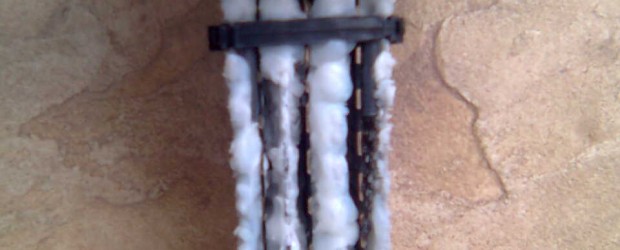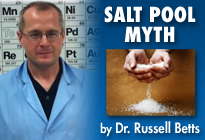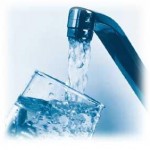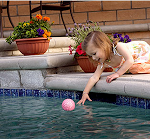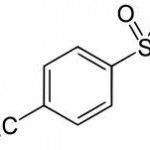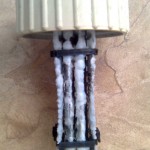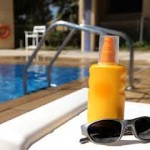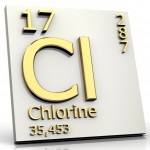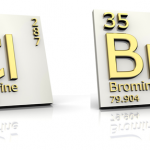Managing Saltwater Pools Requires A Chemical Cocktail Approach.
Not all of the trends, however, are so favorable where saltwater chlorination is concerned. As is true of most any aquatic sanitizing product or technology, saltwater chlorine generation has run into its share of critics, who point to a range of potential problems.
On the most basic level, there are those concerned about the way that the systems are sold, or more accurately, over-sold. They point to consumers who believe that because they have a saltwater pool, their pool is not chlorinated. Because many people are interested in avoiding problems associated with chlorine, ranging from odor to chlorine byproducts, there is a concern that saltwater chlorine generation has been sold as an “alternative” sanitizer.
Of course, nothing could be further from the truth because saltwater pools produce the same levels of chlorine in pool water as traditionally chlorinated pools.
More troubling still is the perception that the technology is maintenance free. The units themselves require regular scale cleaning, and ECG life span varies greatly between a single year to perhaps five or six.
The system’s outputs must be regularly monitored to ensure proper performance, and overall water balance must be maintained to prevent damage to pool surfaces and metallic components, such as copper heat exchangers and stainless-steel filter internals.
Pool water chemistry and maintenance in saltwater pools has been perhaps the most salient concern. Even in the earliest days of the technology, service technicians began noticing that the pH and total alkalinity levels in saltwater pools would rise rapidly, sometimes at rates that were difficult to handle on weekly service.
As pH drifts upward, techs noticed, ORP levels dropped, requiring greater concentrations of chlorine to achieve the same levels of oxidation and sanitation. A solution to this problem has been developed where pH controllers are added to the system to continually add acid as needed to control pH and total alkalinity, but this of course adds cost and complexity.
Perhaps the greatest concern involves corrosion of pool equipment and cementitious or stone surfaces adjacent to the pool. Even the most staunch advocates of the technology acknowledge that saltwater is corrosive and will attack certain alloys, including stainless steel. Their response is to turn to equipment that uses material suitable for saltwater pools, such as filters using polymer components.
Many builders have also reported significant problems with splash out, where the water evaporates and leaves high concentrations of salt behind that damages porous coping or permeable types of stone. Again, proponents counter that the key is to be aware of this issue and select materials that resist damage or to use sealant products to protect surfaces.
The advent of the cocktail approach has also reportedly led to much wider acceptance of the systems in commercial settings. Although many health departments are still reluctant to use saltwater systems, based largely on concerns over the systems’ abilities to keep up with chlorine demand when bather load surges, combining saltwater chlorination with a technology such as ozone, which can deliver tremendous sanitizing power quickly, has deflected some of those concerns.
Manufacturers of saltwater systems also note that systems should be sized so their daily operating output level is well below maximum output so that in the case of elevated chlorine demand, the system can be temporarily ramped up via an ORP controller to generate higher concentrations of chlorine.
Resources: http://aquamagazine.com/content/post/Managing-Saltwater-Pools-Requires-A-Cocktail-Approach.aspx
 Mystery Stains in Salt Generator Pools.
Mystery Stains in Salt Generator Pools.October 16, 2013 
 How safe is your indoor swimming pool?
How safe is your indoor swimming pool?September 4, 2013 
 Mystery Stains in Salt Generator Pools.
Mystery Stains in Salt Generator Pools.October 16, 2013  Skin Problems Caused by Swimming Pool Bromine.
Skin Problems Caused by Swimming Pool Bromine.February 26, 2012  Bladder Cancer Linked To Swimming Pool Chlorine.
Bladder Cancer Linked To Swimming Pool Chlorine.February 29, 2012  Swimming Pool Chemicals Cause Thousands of Injuries.
Swimming Pool Chemicals Cause Thousands of Injuries.March 6, 2012













